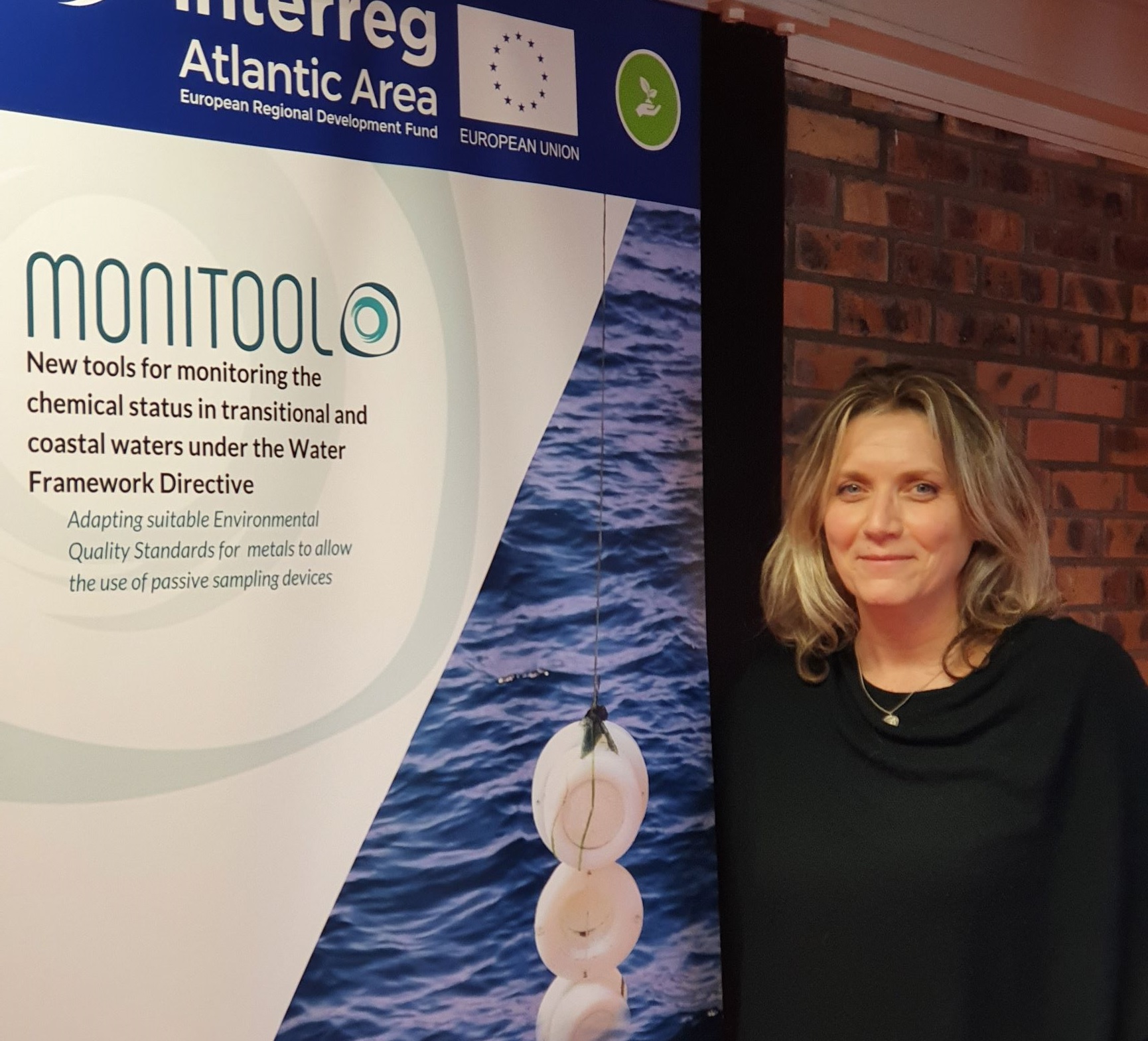Interview with Isabelle Amouroux, leader of MONITOOL Work Package 6 (EQS Adaptation and Chemical Status Assessment)
Isabelle Amouroux works in the Biogeochemistry and Ecotoxicology Unit (Chemical Risk Analysis group) of Ifremer (Institut Français de Recherche pour l'Exploitation de la Mer: French Research Institute for Exploitation of the Sea) a French public organisation.
She has many years of experience working on monitoring of marine water quality and chemical risk assessment.
What is the aim of Work Package 6?
As DGT results cannot be directly compared to EQS marine water layed down by the regulation (WFD), the general objective of this WP is to define a methodology to adapt an EQS marine water to DGT for nickel, lead and cadmium, so that DGT results could be used in a regulatory context for waterbody quality assessment. This innovative project is based on simultaneous collection of water samples and DGT deployments. This will enable comparison of measured DGT-labile metal concentrations to access chemical status of transitional and coastal waters and, thus, implementation of DGTs for regulatory monitoring within European Directives.

3 actions are carried out within the framework of this WP:
- EQS adaptation for priority metals (Pb, Ni, Cd);
- Thresholds adaptation for other specific metals (Co, Fe, Mn, Zn) ;
- Simulation of obtained EQS values of DGTs metal data for chemical status assessment.
Which kind of data had to be acquired to achieve this objective?
The first step is to understand how EQS marine water have been determined, what are the barriers that prevent the use of DGTs in a regulatory framework, and to define the difference between a filtered water result and a DGT result. This expertise is essential in order to understand how an adaptation of the EQS to DGT can be done.
The second step is to acquire relevant, reliable and comparable field data. One of the objectives was to acquire data over a wide range of concentration and to reach and even exceed if possible the EQS value. As we knew that such level of concentration (EQS values) are not met usually in marine environment, we have selected some sites suspected to be highly contaminated for Cd, Ni or Pb, for example, harbours. In the framework of the Monitool project, we have acquire relevant, reliable and comparable results on DGT and filtered water (Seafast ICPMS), these results comes from different marine environment context, which gives even more consistency to this precious database (more than 250 DGT samples and more than 500 water samples which correspond to 2,500 data of metal concentrations in DGT resins, and about 6,500 data of metal concentrations in marine and estuarine water).
The last step is to establish a methodology and to propose EQS DGT values.
What are the links of WP6 with others WP?
For the consistency of the EQS DGT determination, WP6 need to have a robust and reliable dataset and an appropriate statistical treatment. The database was designed by AZTI (leader of WP4) and each Partner was responsible for their data to be recorded in the database following the agreed protocol (WP5 lead by CEFAS). The data processing in the framework of the WP6, complete the exploration of data done by AZTI (WP4).
Have you got first results?
The first results were presented in Nantes in February at the 5th MONITOOL progress meeting. They are still preliminary. Prior the adaptation of EQS marine water to DGT, it is necessary to highlight a correlation (statistically representative) between the DGT measurements and concentrations in dissolved water (spot sampling).
What is also important to consider is that the adaptation of an EQS for DGT is not the only possibility for the use of DGT in the framework of the WFD. Depending on the metal considered, if the model allows it, it is possible to determine a concentration in the dissolved fraction from a concentration in the DGT and thus compare this value to EQS marine water. This is what we will be working on in the coming months.



